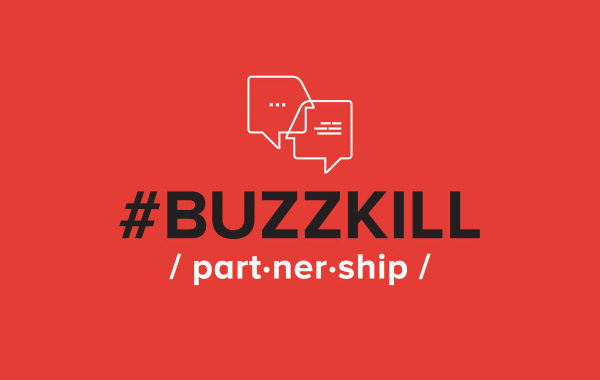In our Buzzkill series we shine a light on some common industry buzzwords, and look at how we can reclaim, redefine, and reinvigorate these words together as an industry. See previous Buzzkill posts here, here, and here.
We’re going to get a little real here today and say something outright that everyone knows, but nobody really likes to come out and say: We all want to get paid. Before we go further, first we can say with complete honesty that we truly love what we do. We also subscribe wholeheartedly to the belief that the answer to why you do what you do should not be money. But at the end of the day, we’re all making a living, and we all want to not just get paid, but be paid what we’re worth. Our time, our experience, and our talents are all worth something.
This brings us to the last buzzword in our Buzzkill series. How do you define what those things, and the many other things you do, are worth? How do sell yourself or your business to clients? Usually, you start talking about value.

So… what’s wrong with value now?
To be clear, there’s nothing inherently wrong with value (or partnership, innovation, or authenticity, for that matter). You, we, and millions of other people put heart and soul, blood, sweat, and tears, hours, days, and years into what you do for a living, and what you do is valuable. There’s nothing wrong with acknowledging your value. But in many industries — and certainly in ours — it can be difficult to quantify the value of some very intangible things. What’s the value of creativity? Ideas, creative problem solving, insights that come with experience, and strong relationships are absolutely valuable and can all make or break your event – but they are also all prone to sounding like business jargon, and can’t often be measured in dollars and cents. How do you determine the worth of an idea?
In connection to this, there are some really interesting new ways that event apps and other technologies are trying to address quantifying success or showing more measurable ROI, and you can read some interesting developments on that front here. But even with this type of technology, how do we not fall into a trap of selling ourselves short by presenting our value in the wrong way?

How to think about value.
Defining our own value is tricky, and we can admit that it’s something we are constantly learning to do more clearly, more confidently, and with greater ease. In an industry like ours, it can be helpful to start by thinking of value as how you can be of service. For anything we do to be valuable to our client, it needs to serve them in a specific, tangible way – even if that “what we do” isn’t so concrete.
For example, one of the ways in which we bring a ton of value to a project is through the strength of our partnerships. Kind of a jargon-y sounding, intangible statement, right? The benefits are pretty major, however; our great relationships with other talented, passionate, dedicated event profs means that we know exactly who to call in order to have a showstopping suspended feature wall custom built to our design. It means that when our client has been passed the torch of an important local fundraiser, we have an existing (and wonderful) relationship with the perfect partner venue. We can do concrete and irreplaceable things with those hard to define, but very valuable, qualities.
A value proposition – defined here as a “positioning statement that explains what benefit you provide for who and how you do it uniquely well” – is an intriguing exercise to help you dig deeper into your value. Find a similar exploration here.





Beware the “value add.”
In a recently updated post, The Globe & Mail put “value add” right on top of their list of overused corporate buzzwords. Start digging, and you’ll find this little proposal mainstay on almost every single list of hated buzzwords… and yet, we’re all still using it. As with most jargon, the dislike for this term most likely stems from it being overused and under-delivered. It can also run the risk of making everything not defined as a value add suddenly come into question as having less (or no) value, or suggesting that the client is missing out on getting value without adding these items to their budget.
When tempted to use this term, consider the following: First, if you are going to call out something you’ve proposed as having added value, consider whether it is compelling enough to justify this type of attention. Conversely, if what you’re proposing as a value add is something the client has specifically requested or will obviously 100% need, this is really going to rub them the wrong way. There is value in listening to your client and presenting them with exactly what they need. There is value added when you have an idea that’s truly innovative, goes beyond what they need or asked for, but won’t sink the ship if it doesn’t make the cut.
Put your actions where your mouth is.
Delivering value is key to our success, and we know that. It’s difficult to convey and hard to measure, but priceless when seen in action. The proof is in the pudding, so to speak. As with authenticity, value is often better shown than said. There’s a time and place to talk about value, but do so with a plan to back it up.
Often, your happy clients are your best way to verbalize your value. Clients who trusted you with their project, were thrilled with the results, and were willing to pay you what you are worth are living proof of your value… and it’s always nice to let someone else do the gushing for you. But seriously, in our review-crazy culture, where ratings for everything from dinner to your doctor are becoming more and more common — and more and more important — a glowing review from a pleased client is the best case scenario. (Besides, debriefing with your clients and finding out how happy they are – or are not – is really valuable for you, and will only strengthen your work, and your relationships.)
Lastly, and this is easier said than done sometimes, if you don’t believe in your value, no one else will. Yes, it’s hard to quantify. Yes, it’s hard to measure. Yes, it’s hard to put a price tag on. But you know what you’re worth. Be realistic, be reasonable, but don’t sell yourself short – and don’t let anyone else sell you short either. If you’re really finding it difficult to explain your value, or worse, defend your value, to a client or a potential client, it might be time to consider whether this is a good fit for you both. It’s up to you to believe in your own value first – just make sure you’re putting real action behind your words in the end.
We’d be so excited to talk to you about the great things we can do together, what you think about this and our other buzzwords, or anything else you have on your mind. Every great conversation starts with a simple “hello,” so drop us a line.




